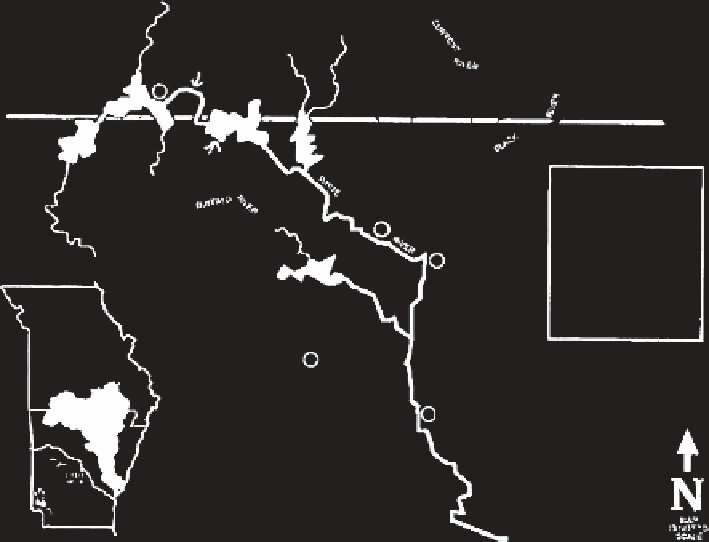Environmental Engineering Reference
In-Depth Information
The low releases from dams are often determined by the project purpose and the license require-
ments. Flows are presently not subject to the Clean Water Act or water quality standards, although
they directly impact quality and can be used to mitigate water quality concerns. Recall that the goal
of the Clean Water Act included “physical” as well as chemical and biological integrity.
In the absence of the consideration of the downstream impacts, the lows or the absence of lows
can have a devastating impact on the tailwater biota, and the related economy. As indicated in
Section 18.3.1, there may be license conditions that impose minimum lows. But, where there are
no such impositions, the lack of a speciication to maintain a release may impact the ability to later
include a release in the licensed operation, and the licenses are in effect for periods of 50 years.
One illustrative example of impacts and what may often be required to implement minimum
lows is the White River Basin in Arkansas and Missouri, consisting of ive U.S. Army Corps of
Engineers (the Corps) lakes operated primarily for hydropower and lood control (USACE 2008;
Figure 18.8) and constructed during the period of 1940-1970. The reservoirs altered the tailwaters
from a warmwater to a cold-water system. Trout were introduced into the tailwaters, resulting in
what is today a world-class trout isheries and a major recreational industry below the dams. The
isheries extend from 5 mi. below Norfolk Lake (to its conluence with the Bull Shoals tailwater)
to 89 mi. of the White River below Bull Shoals (USACE 2008). The dams are operated by the
Southwestern Power Administration (SWPA).
A reasonably typical release schedule and water quality proile for Bull Shoals Dam is illustrated
in Figure 18.9. This case demonstrates a metalimnetic oxygen maxima and low DO conditions near
the bottom. The reservoir hypolimnion commonly becomes hypoxic during the summer months
(see DO TMDL in Section 18.3.2). Also demonstrated are the relatively cool hypolimnetic tempera-
tures and the daily variation in turbine discharges.
Previous authorizations for the ive projects contained no provisions for minimum releases. In
the absence of power generation, lows are restricted to turbine and dam leakages (about 210 cfs
for Bull Shoals and 75 cfs for Norfork; USACE 2008). Of course, without lows, the downstream
Clearwater
Lake
Lake
Taneycomo
Ta ble Rock
Lake
Norfork
Lake
Missouri
Beaver
Lake
Arkansas
Bull Shoals
Lake
Study area:
Lakes:
Beaver, Ta ble Rock,
Bull Shoals, Norfork
Greers Ferry
Rivers:
White, North Fork,
Little Red,
Lake Taneycomo
Batesville
Newport
Greers Ferry
Lake
Little Rock
Clarendon
White River
minimum flows
Arkansas/Missouri
FIGURE 18.8
Projects in the White River Basin, Arkansas and Missouri. (From USACE, White River
Basin, Arkansas, minimum lows project report, U.S. Army Corps of Engineers, Little Rock, AR, 2008.)

Search WWH ::

Custom Search